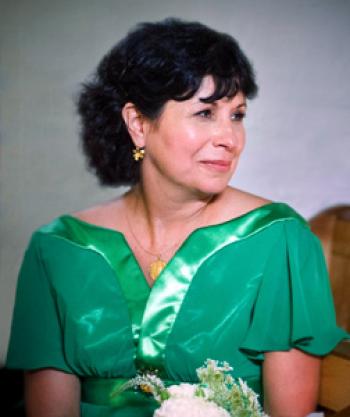
Monica Helo
Monica’s Law in effect Friday
Howell Dennis
News Editor
Crowley Post-Signal
Monica Helo was emphatic when she spoke to the Post-Signal during a recent interview.
A new law, named for her, will go into effect Friday, Jan. 1. A humble woman, she didn’t know that the law would be named for her. She simply wanted a law to protect others.
“That was Jack Montoucet (Dist. 42 state representative),” she said of the man who fought alongside her to get the law — which requires that all patients receiving mammograms and/or breast ultrasounds receive notification about dense breast tissue as well as narrative reports — passed. “I was never doing this for publicity. When I first talked to Representative Montoucet, I had no idea he would be so receptive to my issue. He is a good man who does things for the right reasons like that.”
Helo comes from a family with a history of breast cancer. She had been very proactive about getting checked regularly as well as performing regular self-examinations.
Helo was diagnosed in June 2013, after she located a suspicious area during self-examination.
She and her husband opted for advice and surgery from M.D. Anderson where doctors opened an envelope which contained many prior years of her narrative reports. It was not until this 2013 visit to M.D. Anderson that Helo discovered what was contained in her 2009 reports.
These four-year-old mammogram and ultrasound narrative reports that Helo had never seen revealed “extremely dense” breast tissue which could “obscure a lesion on mammography.”
The report also mentioned that there were a couple of “benign-appearing cysts” on her right breast, the largest being approximately 1.1 centimeters in size. By 2013, this area was stage 3 breast cancer. And the 1.1 centimeter-sized area had grown in size to 7 centimeters.
“If I had known about the findings in 2009, I would have insisted on a biopsy and would have been diagnosed four years earlier and, therefore, at a much lower stage,” she said. “Women need to understand the importance of density levels during breast exams.”
What followed were the rough, energy draining treatments and surgeries that many breast cancer patients have to undergo: a bilateral mastectomy and 13 chemotherapy treatments in 2013; a Level 2 lymph node dissection surgery; 30 radiation treatments and reconstructive surgery in 2014.
And then there was the intense physical therapy which followed.
“I was so weak,” she said. “My husband was just wonderful during the entire ordeal. He handled everything.”
The surgeries and treatments Helo went through left her feeling drained. However, they were successful and today Helo is cancer-free.
“I finally feel like I’m self-propelled,” she said with a smile.
But her experience of not knowing about the 2009 findings left her angry, and she had many questions.
“I knew I wasn’t the first person to have important mammogram and breast ultrasound findings slip through the cracks,” she said. “What I hope (from this law) is that I am the last person this happens to in Louisiana.”
When she inquired as to why she was not given the full report on her 2009 mammogram and breast ultrasound, she was told that she was sent what the law required — a “lay letter”. Monica’s “lay letter” stated that everything was clear.
Most observers would think that any bill that helps people avoid cancer would pass without any problems. However, there was “fierce opposition” to Montoucet’s bill by the Louisiana Hospital Association, one of the most powerful lobbyist groups in the state, who staunchly supported the federal law stating that the patient receives only the lay letter.
“That letter didn’t give me too many details in 2009,” said Helo.
The lobbyist organizations opposing this legislation further testified that receiving the report would cause “undo worry” and that “some of the medical terminology would be too difficult for the patient to understand.”
“I felt offended,” she said. “While men do get breast cancer, the individuals routinely receiving these tests are women. This is a direct insult to my gender. I would have much rather worried for a few days than be diagnosed with stage 3 breast cancer.
“I couldn’t believe that one of those lobbyists was a woman.”
Helo made several trips to Baton Rouge to testify before both the House and Senate Health and Welfare Committees.
Because of the lobbyists, the bill passed the House of Representatives in a very watered-down form. Representative Montoucet worked hard to return HB 186 to the verbiage needed to protect his constituents prior to going to the Senate.
HB 186 passed the Senate worded as needed for full disclosure and was scheduled to return to the House floor for concurrence.
“I asked Representative Montoucet if I needed to go back to Baton Rouge to appear before the House for concurrence,” she said emotionally. “He just smiled and said, ‘Monica, I got it from here’.”
On July 1, 2015 House Bill 186 was signed into law by Governor Bobby Jindal. Future law students who are studying their La. Revised Statutes will refer to Act 378 as the Monica Landry Helo Early Detection Act. And they will learn that it is the toughest law of its kind of any state in the country.
“I may have handled the information from the breast cancer point of view but Representative Montoucet is the one who got this done legally with compassion and expertise,” she said. “This experience taught me that there are still many good people in the world.”
Helo also wished to urge all women to look into the website areyoudense.org.
- Log in to post comments
